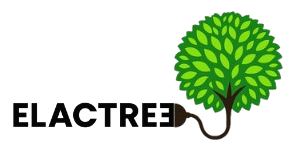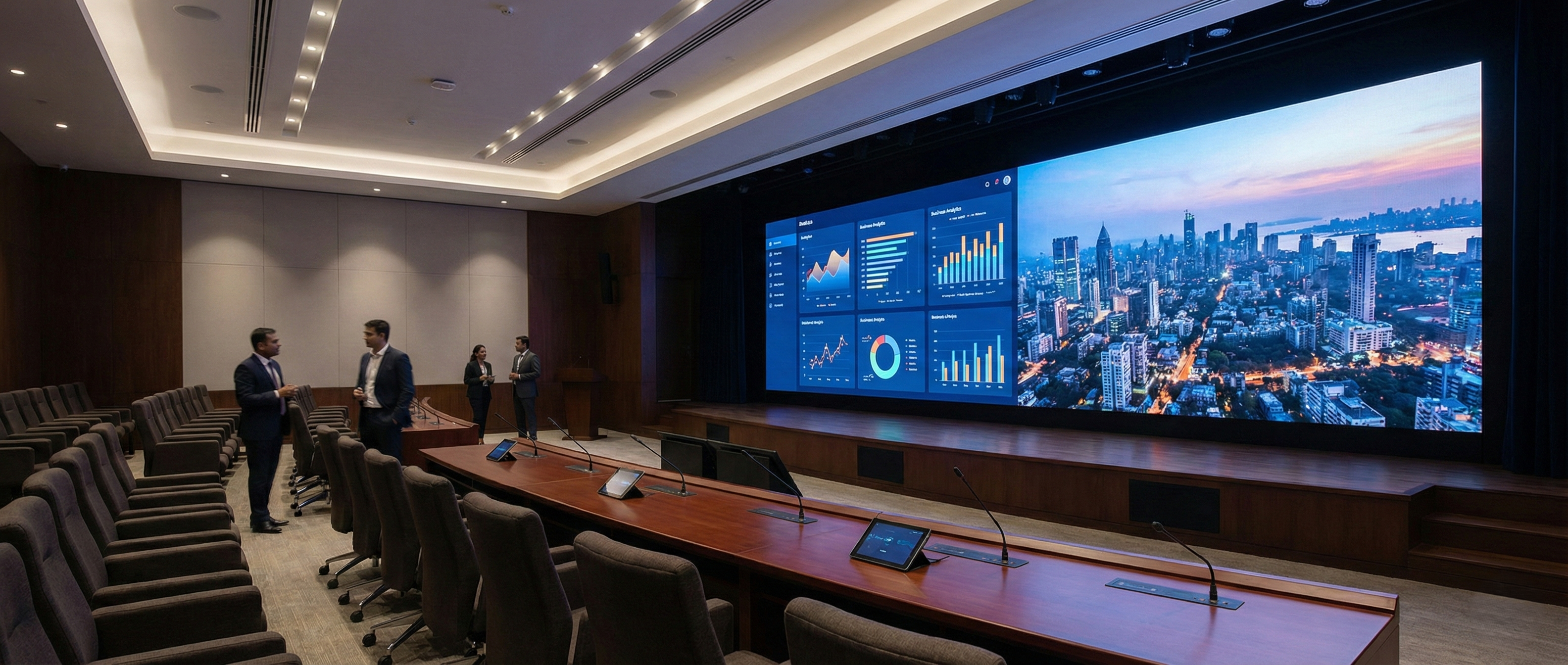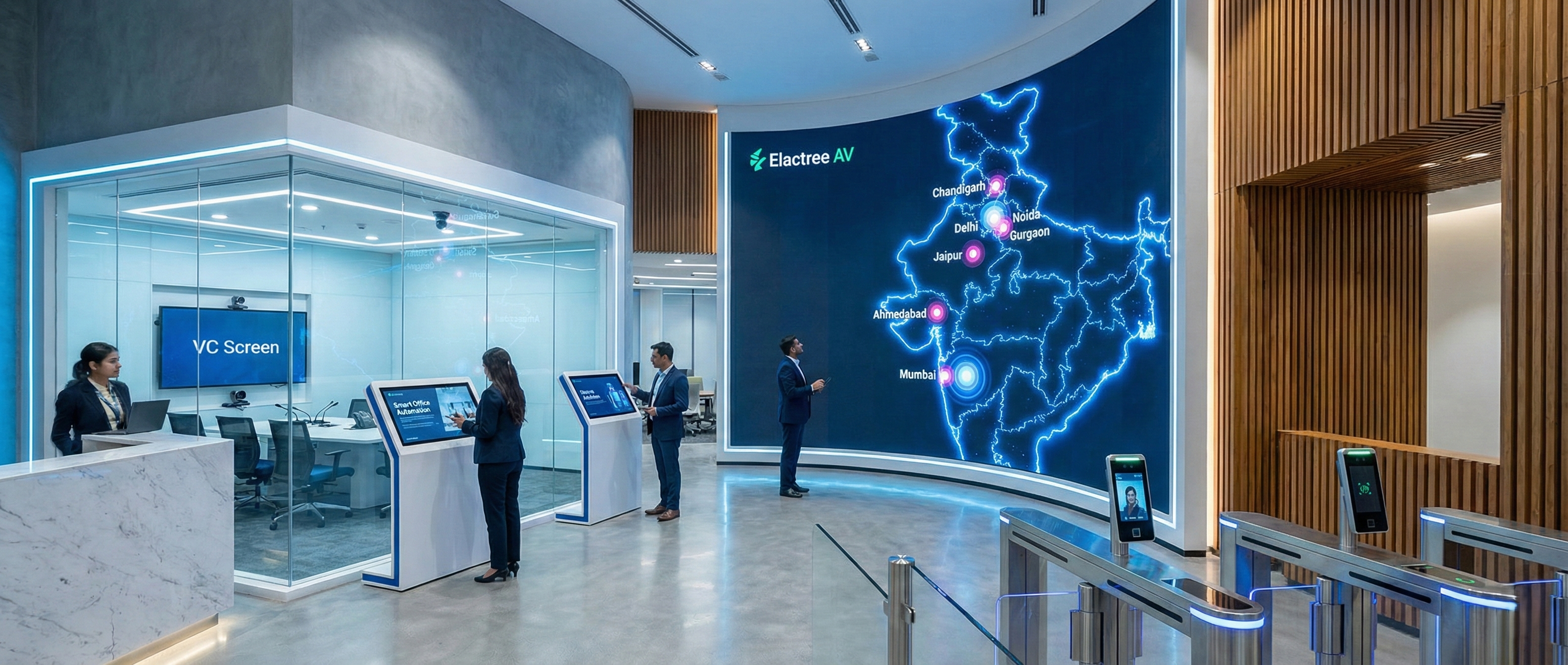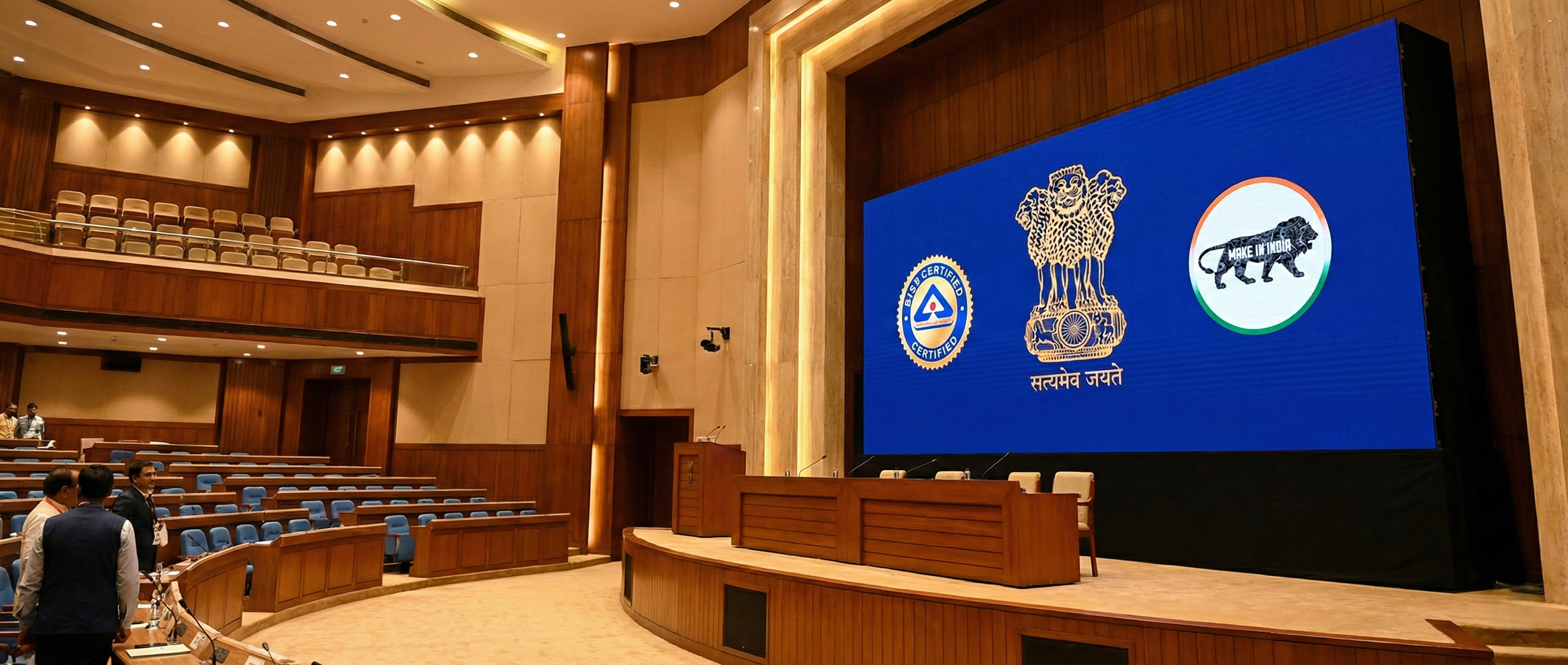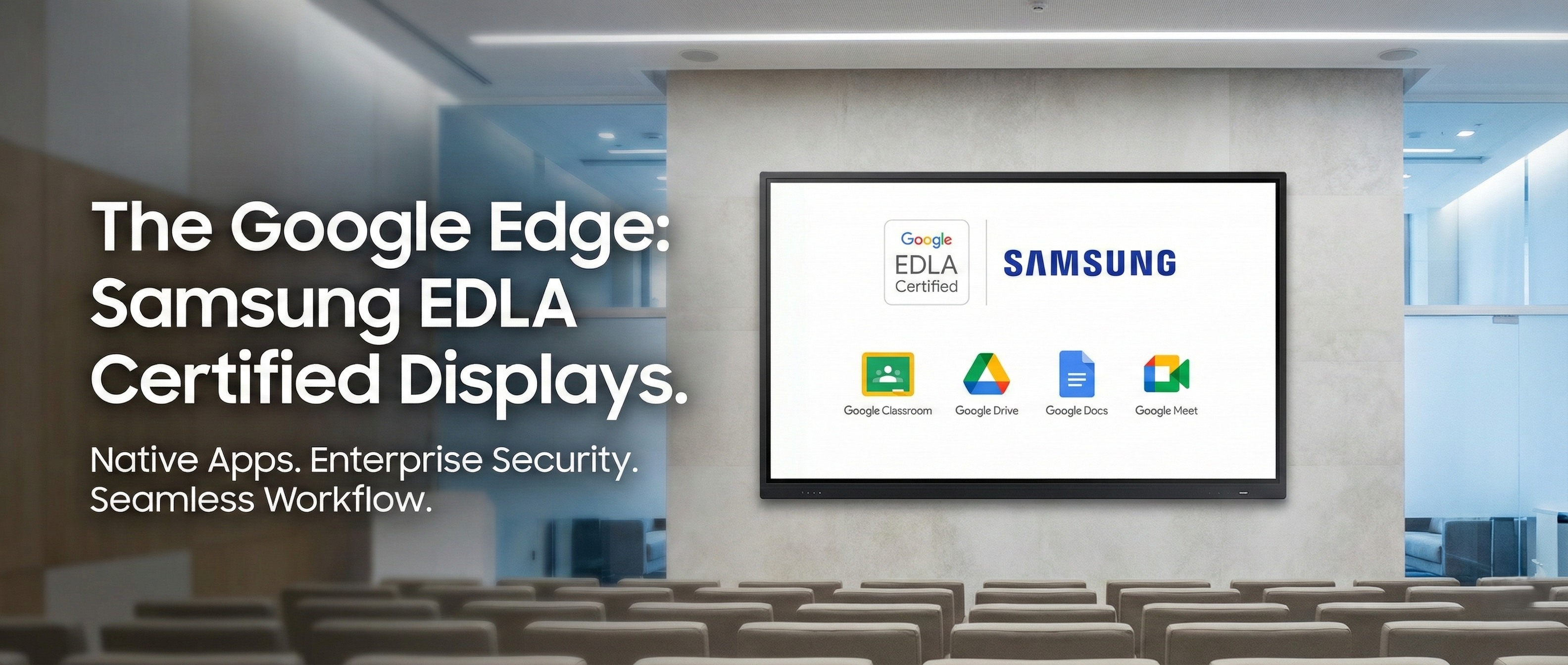Indoor P2.5 Active LED Video Wall Price Per Sq Ft in India: The 2025 Real Cost Guide
If you are looking to upgrade a corporate boardroom, auditorium, retail space, or command center in India, you have likely realized that projectors are out, and active LED video walls are in.
You have also likely hit the biggest roadblock in your research: getting a straight answer on price.
Searching for the "Indoor P2.5 active LED video wall price per sq ft in India" usually leads to "Call for Quote" buttons rather than actual numbers. This is frustrating, but there is a reason for it: an LED wall isn't a single product; it's a customized system made of hundreds of components.
In this guide, we will provide realistic market price ranges for P2.5 indoor displays in India and, crucially, explain why the price per square foot varies so wildly between suppliers.
The Direct Answer: Estimated P2.5 Price Range in India
Let’s address the elephant in the room. While final pricing depends on customization, here is the current market average for a P2.5 indoor active LED display in India (as of early 2025).
Please note: These prices refer to the active LED panels only per square foot.
| Quality Tier | Estimated Price Range (Per Sq. Ft.) | Typical Use Case |
| Entry Level / Economy | ₹3,500 – ₹4,000 | Basic retail signage, budget-constrained halls where ultimate color accuracy isn't critical. |
| Mid-Range (Most Popular) | ₹4,000 – ₹5,000 | Corporate boardrooms, high-end retail, standard auditoriums. (The sweet spot for performance vs. cost). |
| Premium / Broadcast Grade | ₹10,000 – ₹15,000+ | Broadcast studios, command & control centers, luxury experiences requiring high refresh rates and zero failure. |
Important Warning: If you see quotes significantly lower than ₹4,000 per sq ft for a P2.5 in India, be extremely cautious. These often use refurbished LEDs, second-grade batches, or inferior power supplies that pose fire risks and fail within a year.
Why P2.5? Understanding the "Sweet Spot"
Why is P2.5 (Pixel Pitch of 2.5mm) the most requested specification for indoor screens in India?
Pixel pitch is the distance between the center of one LED pixel to the next. P2.5 means there are 2.5mm between pixels.
P2.5 is the "goldilocks" option for most indoor venues. It provides a crisp, high-definition image from a viewing distance of roughly 8 to 10 feet (2.5 meters) onwards.
If your audience is closer than 6 feet (like in a small huddle room), you need a finer pitch like P1.8 or P1.5, which costs significantly more.
If your closest audience member is 20 feet away (like a large concert hall), P2.5 is overkill, and a cheaper P3.9 would suffice.
For most conference rooms and lobbies, P2.5 offers the perfect balance of resolution and budget.
Why Does the Price Per Sq Ft Vary So Much? (The "Hidden" Specs)
Two different suppliers might quote you ₹3,000 and ₹5,000 per sq ft for a "P2.5 Indoor Wall." Why the massive difference? It comes down to the quality of the components inside the panel.
Here are the three main factors influencing the Indian market price:
1. The LED Lamp Brand (The biggest factor)
The tiny diodes that light up are graded by quality.
Premium: Brands like Nationstar (Gold wire) or Kinglight offer high brightness, consistent color across the entire wall, and long lifespans. These command higher prices.
Generic/Unbranded: Cheaper quotes use generic lamps with copper wiring. These often suffer from "dead pixels" quickly and have poor color uniformity (some squares look slightly different shades than others).
2. The Driver IC (Refresh Rate)
This chip controls how fast the LEDs switch on and off.
Standard (1920Hz): Fine for displaying static images or basic presentations.
High Refresh Rate (3840Hz+): Essential if the screen will ever be filmed by a camera (e.g., video conferencing, live events). If you use a low refresh rate screen on a video call, viewers on the other end will see flickering scan lines. High refresh rate ICs cost more.
3. Cabinet Material
Die-Cast Aluminum: Lightweight, dissipates heat well (no noisy fans needed), and ensures perfect alignment between cabinets for a seamless look.
Iron Cabinets: Heavy, prone to rust over time, and harder to align perfectly, leading to visible gaps in the video wall.
Comparison: P2.5 vs. Other Popular Indoor Pitches
How does the P2.5 stack up against tighter and wider pixel pitches in terms of cost and application?
| Feature | Indoor P1.8 (Fine Pitch) | Indoor P2.5 (Standard) | Indoor P3.9 (Wide Pitch) |
| Pixel Pitch | 1.8mm | 2.5mm | 3.9mm |
| Optimal Viewing Distance | > 5 ft (Very Close) | > 8 ft (Mid-Range) | > 13 ft (Far) |
| Resolution Density | Very High | High | Medium |
| Price Factor (Approx) | 1.8x - 2.5x price of P2.5 | Baseline (1x) | 0.6x - 0.7x price of P2.5 |
| Best Use Case | High-end boardrooms, TV studios, close-up retail viewing. | Conference halls, auditoriums, standard corporate lobbies. | Large venues, concert halls, distant signage. |
Beyond the "Per Sq Ft" Cost: The Total Project Price
When budgeting for your project in India, do not just multiply your square footage by the rates above. You must factor in the necessary extras to make the wall functional.
A complete quote should always include:
Video Processor/Sending Card: The "brain" that takes your HDMI input from a laptop and formats it for the colossal resolution of the LED wall. (Approx. ₹18,000 - ₹60,000+ depending on required inputs/resolution).
Structure & Installation: Fabrication of the metal frame to hold the heavy cabinets safely on your specific wall type, plus labor. (Usually 10-15% of the hardware cost).
Spare Parts: A mandatory 3-5% stock of spare LED modules, power supplies, and receiving cards to ensure zero downtime in the future.
GST: Don't forget the 18% GST on top of the final quote.
Conclusion
An indoor P2.5 active LED video wall is a significant investment that transforms a space. While the "price per sq ft" in India generally falls between ₹4,000 and ₹6,000 for reliable mid-range quality, the final number relies heavily on the component grades you choose.
Don't just chase the lowest price per square foot. Chase the best value. A slightly more expensive wall using Nationstar LEDs and high refresh rate ICs will look better, last longer, and require less maintenance than a budget alternative.
Frequently Asked Questions (FAQs)
Q1: What is the minimum size recommended for a P2.5 LED wall to achieve Full HD (1080p)?
A: To achieve a native Full HD resolution (1920x1080 pixels) with a P2.5 pitch, your wall needs to be approximately 15.7 feet wide by 8.8 feet high.
Q2: Does the price per sq ft decrease if I buy a larger wall?
A: Yes, marginally. While the material cost remains the same, economies of scale on shipping, installation labor, and the processor cost can slightly lower the overall average per square foot on very large projects.
Q3: What is the typical lifespan of an indoor P2.5 LED wall in India?
A: A high-quality active LED wall (using premium lamps) typically has a lifespan of 100,000 hours (over 11 years if run 24/7). However, practical lifespan before noticeable brightness degradation is usually 5-7 years in corporate environments.
Q4: What is the difference between "Active LED" and standard video walls?
A: "Active LED" (or Direct View LED) means you are looking directly at the light source—the tiny colored diodes. This creates much higher brightness and contrast, and crucially, a completely seamless image with no bezels. Standard video walls are usually made of LCD screens tiled together, which always have visible bezel lines between screens.
Q5: Why are quotes in India sometimes vastly different for the same P2.5 spec?
A: As mentioned in the blog, it is almost always due to component quality. A supplier using iron cabinets and unbranded, copper-wire LEDs can quote 40% less than a supplier using die-cast aluminum cabinets and gold-wire Nationstar LEDs. Always ask for the technical datasheet specifying the lamp brand.
